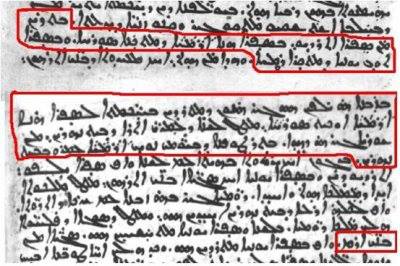David Dag wants to prove in this article that the term Syriac is not only limited to the Aramaic dialect of Urhoy Edessa (Classical Syriac) and the spoken Central Neo-Aramaic of the northeastern Mesopotamian enclave of Tur ‘Abdin, known as Suryoyo Turoyo by its native speakers.
According to scholars Klaus Beyer in his “The Aramaic language Its Distribution and Subdivisions” and Joseph Austine Fitmeyer mostly known for his excellent book “The Semitic background of the New Testament Vol 2 A Wandering Aramean: Collected Aramaic Essays”. Anyhow their Aramaic language development phases is the most used by Semitists and linguist and historians alike.
They divide the Aramaic languages 3000 year of recorded written history into 5 stages
- Old Aramaic
- Official Aramaic also called Imperial Aramaic (reichsaramäisch)
- Middle Aramaic
- Late Aramaic
- Modern Aramaic, also known as Neo-Aramaic
The last stage has 4 branches called:
- Western Neo-Aramaic of Maaloula
- Central Neo-Aramaic (Tur Abdin and Mlahso)
- Neo-Mandaic Aramaic (retna) spoken by gnostic Mandeans of and from Iran only
- Northeastern Neo-Aramaic (NENA) both Christian (Sureth/Suryaya Swadaya) and Jewish dialects (Lishana Deni, Lishana Didan, Lishana d-Noshan) most speaker lived in Iraq and Iran but moved the Israel since the 1950s
Western Neo-Aramaic of Maaloula is spoken outside Damascus Qalamoun Mountains is also spoken in two neighboring Muslim villages Jubb ‘Addin and Bakh’a (Sarkha). According to Professor Werner Arnold this dialect is called both Suryon as well as Aramoytha both are synonyms. Just as Suryoyo/Suryaya and Oromoyo/Aramaya is found as synonyms throughout our literature in Edessan Aramaic (Classical Syriac) regardless Syriac Church denomination of both the West and East Syriac churches,Be it Syriac Orthodox, Syriac Catholic, Syriac Maronite, Church of the East, Ancient Church of the East and Chaldean Catholic Church. This is true for both language and people. And many don’t know this and sometimes even ignore it , Sureth Swadaya (NENA) is known in Arabic both as Suryaniya since the Iraqi constitution of 1973 (al-natiqun bil Suryaniya) meaning “Those who speak Syriac (Suryaniya) and still some ignorantly and deliberately call sureth/Suryaya errenously kaldani and ashuri. Despite that some of their leaders have openly said on TV, websites, lectures etc that Sureth is Suryaniya or Neo-Aramaic in English. According to linguistics and language trees the term Assyrian was a branch of Akkadian and that’s it.
The term is in other words taken for and out dead language and cannot be applied to a living spoken language. Another interesting source on Sureth as de facto Suryaniya is found in the Arabic source from 11th century Spain in Ibn Baklarish’s Kitab al-Musta’ini in Manuscript Arcadia. Nabatean Aramaic of the city of Petra was called Suryaniya in Arabic sources as well in an article by the German orientalist Theodor Nöldeke from 1871. He quotes an Arabic text by the Arab geographer Yaqut, which is transliterated with latin script as “wa ilayha yunsabu as-Suryaniyun wa hum al -nabat wa lughatahum as-Suryaniya”. We can even find in the Talmud (I prefer to call it Jewish Israeli Aramaic instead of the linguistic JPA, Jewisha Palestinian Aramaic was called both Leshon Sursi as well as Leshon Arami or Aramit in the Babylonian Talmud from the 6th century AD written in both Aramaic and Hebrew (Sota 49 B compare Baba chapter 82b). Leshon Sursi referred to JPA here in the Babylonian Talmud.
The Slovakian scholar Rudolph Macuch differentiated between Classical Syriac and Turoyo and Sureth the following way. We know that Edessan Aramac kthobonoyo has two dialects a Western and an Eastern, called Western and Eastern Syriac, and Turoyo central Neo-Aramaic was labeled Western Neo-Syriac, and Sureth Eastern Neo-Syriac.
Conclusion
As you can see both Syriac and Aramaic were used synonymously and transcends Aramaic dialectal boundaries beyond Edessan Aramaic and Central Neo-Aramaic of Tur Abdin and west of Mesopotamia. in Encyclopedia Britannica,11th edition page 625; Theodor Nöldeke, under Semitic languagesalso notes that it is “properly speaking, incorrect to employ the word ‘Syriac’ as meaning the language of Edessa alone” even though Edessan Aramaic has the best claim to it.

